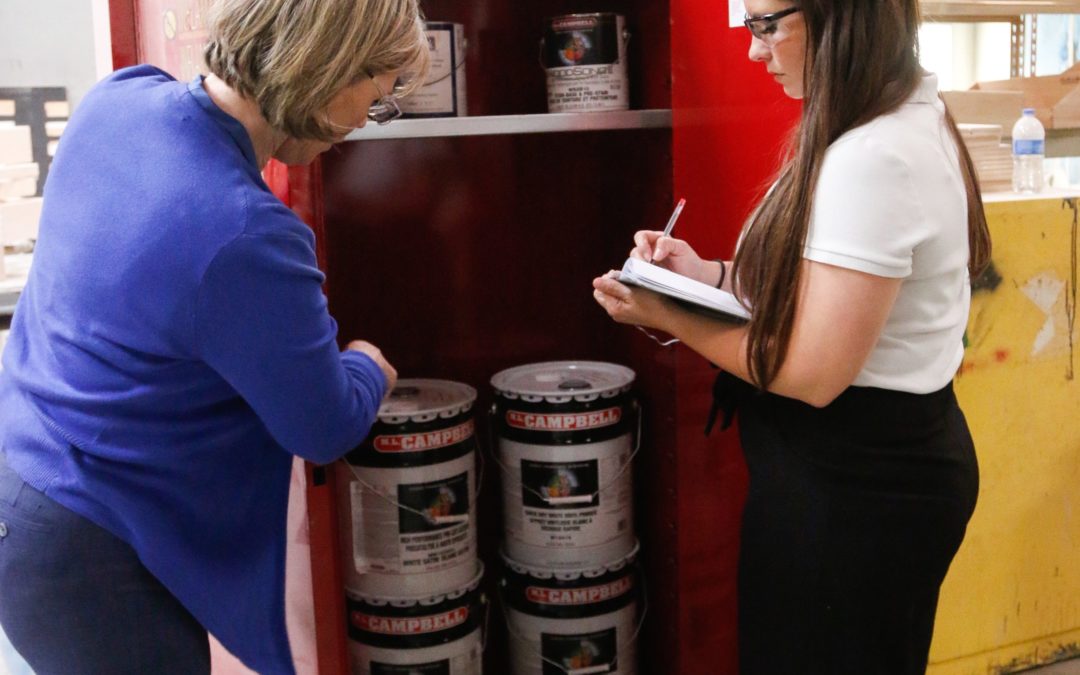Proper Storage and use of flammable liquids can significantly reduce the possibility of accidental fires and injury to employees. In order to protect your workforce, safety leadership must understand the codes and regulations governing the use and storage of flammable and combustible liquids.
The National Fire Protection Association (NFPA) and the International Fire Code (IFC) have developed guidelines for the safe storage and use of flammables. These guidelines are not mandatory unless a federal, state, or local authority chooses to adopt them. However, it is recommended to follow these practices to ensure the safety of your employees. The NFPA released a 2018 edition of NFPA: 30 Flammable and Combustible Liquids, effective September 17, 2017. The changes made in this edition clarify the code, include safety updates, revised requirements to limit the liquid/container combinations allowed in General Purpose Warehouses, and more. You can find the complete code here.
Mandatory regulations have been developed by the Occupational Safety and Health Administration (OSHA) governing Flammable and Combustible liquids for General Industry: 29 CFR 1910.106.
OSHA
classifies Flammable liquids as a liquid with a flash point below 199.4 ℉.
The classification of flammable liquids is as follows:
- Category 1 – Liquids having a flash point below 73.4 ℉ and a boiling point at or below 95 ℉.
- Category 2 – Liquids having a flash point below 73.4 ℉ and boiling point above 95 ℉
- Category 3 – Liquids having a flash point at or above 73.4 ℉ and at or below 140 ℉
- Category 4 – Liquids having a flash point above 140 ℉ and at or below 199.4 ℉
Classification of flammable liquids is not the only factor to consider when determining safe storage requirements. The following factors are all important concerns when designing a storage system:
- Ignition Temperature,
- Upper Explosive Limits,
- Vapor Pressure,
- Specific Gravity,
- Vapor Density,
- Storage Container Type,
- Material of Construction,
- Individual Container Volumes, and
- Aggregate Quantities Stored.
Storage of flammable liquids must be in NFPA approved flammable storage lockers or in low value structures at least 50 feet from any other structure. Do not store other combustible materials near flammable storage areas or lockers.
Our team of experts has over 50 years of experience assisting our clients with interpreting regulations and implementing safety, health, and environmental practices at their facility. Contact us today for assistance with your compliance programs!

